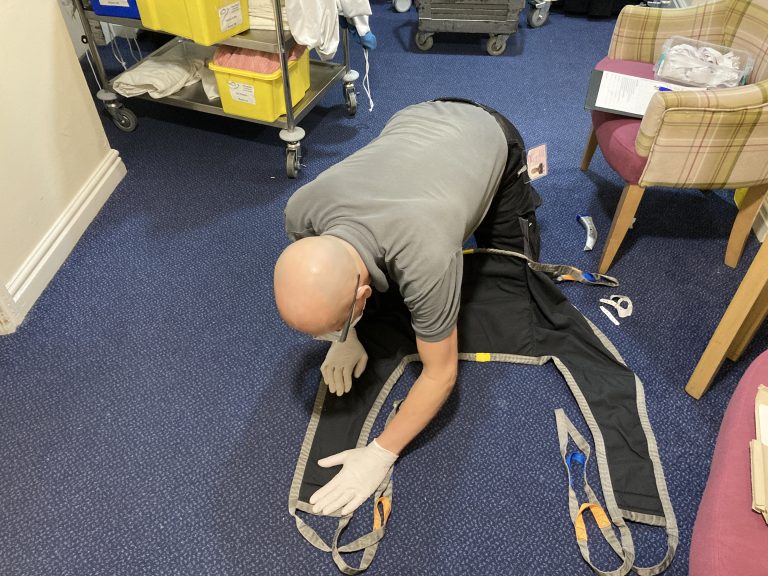Which Types of Care Equipment Need Regular Servicing in Care Homes?
As a service engineer dedicated to maintaining the functionality and safety of essential patient care equipment in care homes, we've had the privilege of witnessing first-hand the impact that well maintained equipment can have on the quality of life for residents.
Ensuring that the equipment they rely on is in an optimal working condition is a responsibility that we take to heart in our day to day duties and in this blog, we'll share some of the essential types of equipment that require regular servicing in care homes.
And why not download our FREE servicing guide to assist you with the ongoing servicing and maintenance of your care equipment, to outline your responsibilities as a care provider and to highlight exactly why it’s important to adhere to government regulations and industry standards.
https://blog.hcsuk.co.uk/industry-essential-requirements-and-best-practice-servicing-guide
1. Patient lifts and hoists: - Legal requirement for LOLER Inspection every 6 months.
Patient lifts and hoists are essential tools for assisting residents with mobility challenges, helping transfer individuals from one location to another, such as from their bed to a chair or to the bathroom.
The safe operation of all types of patient lifts is paramount, as any malfunction could lead to injuries for both residents and caregivers.
Regular servicing ensures that the mechanical and electronic components are functioning correctly and that the safety features such as emergency stop buttons and weight limits are accurate.
You may also find our previous article useful. - https://hcsuk.co.uk/how-often-should-a-hoist-be-serviced-and-inspected/
2. Patient lifting slings: - Legal requirement for LOLER Inspection every 6 months.
Slings are some of the most often and widely used pieces of equipment used within patient moving and handling in care homes, and they can be susceptible to misuse with consequential damage occurring to the lift straps, stitching and fabrics.
For this reason slings are also required to be checked every time ,prior to carers using them, and any damage should be reported to management immediately to help avoid any potential injuries.
You may also find our previous article useful. - https://hcsuk.co.uk/how-often-should-patient-lifting-slings-be-inspected/
3. Bath hoists and bath chairs: - Legal requirement for LOLER regulations every 6 months.
Baths, hoists and bath chairs are vital pieces of equipment for residents’ hygiene and care and as such need to be very well maintained especially if there is only one unit in a smaller care home.
The current regulations state that the maximum allowed water temperatures are set at 37c for the showerhead and 41c for the bath water from the tap. This is to prevent potential sensitive skin damage occurring.
You may also find our previous article How To Keep Your Baths & Bath Hoists In Top Condition useful. - https://hcsuk.co.uk/bath-hoist-servicing/
4. Patient weighing scales/hoist scales: - Recommended every 6 months.
Weighing scales aid in the physical wellbeing of the residents.
They enable care staff to monitor weekly or monthly body weight of the residents in their care, and can act as a red flag to potential health issues that may crop up as a result of weight loss over time.
Because of this they need to be well maintained and kept in good condition and we recommend that they have a periodic six-monthly service and safety check and an annual calibration to ensure the most accurate readings.
You may also find our previous article useful. - https://knowledge-centre.hcsuk.co.uk/having-your-patient-weighing-scales-services-vs-calibrated
5. Profiling beds: - recommended every 12 months.
Profiling beds provide comfort and facilitate care for residents with various medical conditions.
These beds often come with adjustable features to aid in positioning and prevent pressure ulcers.
Regular maintenance of profiling beds includes checking the functionality of adjustable parts, examining the stability of the bed frame, and ensuring that the electronic controls are responsive and accurate.
You may also find our previous article: All you need to know about profiling bed servicing useful. - https://hcsuk.co.uk/everything-you-need-to-know-about-profiling-bed-servicing/
6. Wheelchairs and Mobility Scooters: recommended every 12 months
Many residents rely on wheelchairs and mobility scooters to move around independently, enhancing their quality of life by giving them a sense of autonomy.
Regular servicing involves inspecting the structural integrity of the equipment, checking the battery life, and ensuring that brakes and controls are in proper working order.
7. Oxygen Concentrators: Recommended every 12 months
For residents with respiratory issues, oxygen concentrators are lifelines.
These devices ensure a steady supply of oxygen, improving the residents' ability to breathe and go about their daily activities.
Servicing oxygen concentrators involves replacing filters, calibrating oxygen flow, and inspecting tubing for any leaks or blockages.
8. Vital Sign Monitors: Recommended at least every 2 years
Accurate monitoring of vital signs is crucial in a care home setting.
Blood pressure monitors, pulse oximeters, and thermometers aid caregivers in promptly addressing any health concerns.
Regular servicing ensures the accuracy of measurements and the calibration of devices.
In conclusion, as a service engineer for care homes, we've come to understand the immense responsibility that comes with maintaining equipment that directly impacts residents' well-being.
Regular servicing is not just about fixing problems but also about preventing them.
It's about creating a safe and comfortable environment where residents can thrive.
By diligently attending to the regular servicing and maintenance of patient hoists, wheelchairs, profiling beds, and other essential equipment, we can contribute to a higher quality of life for those who call care homes their home.
Remember, behind every piece of well-maintained equipment is the potential to make a positive difference in someone's life.
And why not download our FREE servicing guide to assist you with the ongoing servicing and maintenance of your care equipment, to outline your responsibilities as a care provider and to highlight exactly why it’s important to adhere to government regulations and industry standards.
https://blog.hcsuk.co.uk/industry-essential-requirements-and-best-practice-servicing-guide
To discuss your care home servicing needs, why not book a meeting with our Servicing Super hero Lee here, or email him at servicing@hcsuk.co.uk or call him today on 01773 532588.





